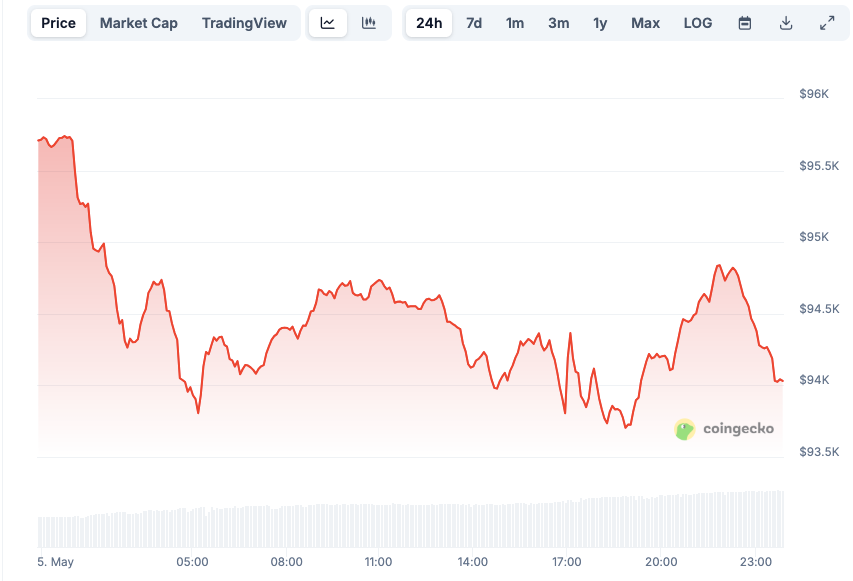Key insights:
- Bitwise CEO Hunter Horsley compared Bitcoin’s fixed supply with the expanding supply of fiat money and gold.
- Bitcoin’s annual supply growth is currently at 0.84% and will continue to decrease over time.
- More than 19.8 million of the 21 million Bitcoins have already been mined. This means less than 6% of the supply is still available.
Bitcoin’s fixed supply is now under sharper focus as global interest in the asset reaches a significant milestone. Bitwise CEO Hunter Horsley recently compared the limited issuance of BTC with the expanding supply of fiat money and gold.
His statement highlights how Bitcoin’s scarcity is becoming a defining factor amid rising demand from public and private entities.
BTC Scarcity Stands Out Amid Demand
The popularity of BTC continues to rise as its supply decreases over time. Growing institutional interest further strengthens its market appeal.
Horsley reported that nearly 19.8 million Bitcoins have already been mined from the total 21 million supply. This leaves only a limited amount of Bitcoin still available for mining. Less than 6% of the entire supply is still available for mining in the future.
This specific model that regulates Bitcoin creation opposes the continuous growth patterns displayed by fiat and gold currency markets. Global fiat currency grows at an annual rate of 14% and 7.4% annually in the United States.
The yearly increase in gold amounts to a rate between 1.5% and 2%. Bitcoin’s current annual supply expansion reaches 0.84%, but this figure will decrease steadily.
The restricted coin release into circulation proves that BTC follows a deflationary model. The growing public awareness about this feature will likely make the scarcity debate more prominent.
Gold and Fiat See Consistent Supply Growth
Fiat currencies grow steadily because central banks implement policies and government spending measures. The worldwide monetary base has experienced a double increase during the last six decades because of these policy changes.
Every ten years, the U.S money supply goes through an expansion period. Very slow, but steady activities in gold mining have preserved its role as a financial storehouse since ancient times.
A 1.5% to 2% yearly supply growth ensures a slow expansion, causing environmental and logistical difficulties. The absolute scarcity of gold is limited because new mining reserves cannot be found.
Bitcoin network utilizes a rigid schedule controlled by the blockchain protocol. The Bitcoin issuance rate follows a programmed reduction due to the programmed four-year halving structure.
The automation system provides complete transparency beyond the standards of both fiat and gold markets.
Institutions Boost Holdings as Supply Tightens
Public companies now buy Bitcoin more quickly than the mining operation can generate it. According to Bitwise, new BTC production will reach 165,000 in 2025 but decrease from historic numbers.
The first quarter of 2025 saw businesses acquire 95,000 BTC, regardless of the projected 165,000 BTC mining output. Strategic entities such as Strategy, Semler Scientific, and Twenty-One continue to rapidly increase their Bitcoin reserves.
The strategic institution Strategy added 15,355 BTC to its reserves, while Semler Scientific acquired 3,467 BTC. Twenty-One has received financial support from Tether and SoftBank as it targets possessing 42,000 BTC.
The additional purchases reduce supply availability in the market, thus causing increased selling pressure. Quick mass buying activity shows that decision-makers are changing their perspective on using Bitcoin as a reserve asset between banks.
Market availability faces increased pressure due to rising institutional demand, which conflicts with decreasing new supply.
Spot Bitcoin ETFs Drive New Demand
Spot Bitcoin ETFs have also seen significant capital inflows this year, reflecting sustained interest in the asset class. The Bitwise Chief Investment Officer, Matt Hougan, confirmed that ETFs obtained $3.3 Billion in funds within a week.
The inflows have spurred additional exposure as financial industry platforms face more exposure. Institutional players have stopped speculating about Bitcoin acceptance because regulated financial tools have conquered widespread approval.
With ETFs attracting consistent demand, Bitcoin’s market integration is entering a new phase. The heightened demand incorporates an additional scarcity factor, strengthening current supply reserve limitations.

The strategy chair, Michael Saylor, states that bank participation in cryptocurrency adoption will boost its adoption rates. The trend of increasing bank interest remains strong even though all institutions have initiated movements.
An escalating demand for digital assets indicates significant changes in the digital allocation market. According to recent CoinGecko data, BTC now commands 64.89% market dominance, the highest level since January 2021.
BTC is expanding in valuation due to rising demand and restricted supply mechanisms. Despite a 1.5% price dip, Bitcoin remains strong in the broader market.
